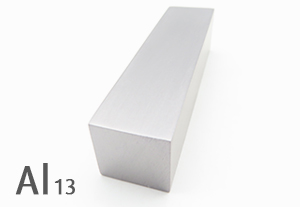-
Titanium
-
Titanium
Titanium and titanium alloys have low density and high tensile strength (up to 140 kg/mm²). In the range of -253~600℃, its specific strength (tensile strength/density) is almost the highest among metal materials. It can form a thin and strong oxide film in a proper oxidizing environment with excellent corrosion resistance.
Learn More
-
-
Titanium Alloy
-
Titanium Alloy
Known as the "main force" of titanium alloys is Ti 6Al-4V or grade 5 titanium, which is the most commonly used among all titanium alloys. It accounts for 50% of the total amount of titanium used in the world.
Learn More
Its usability lies in its many benefits. The Ti 6Al-4V can be heat treated to increase its strength. It can be used for welding structures at operating temperatures up to 600°F.
-
-
Niobium
-
Niobium
Niobium has the properties of high melting point, low vapor pressure, good cold working performance, high chemical stability, strong resistance to liquid metal and acid and alkali corrosion, and large dielectric constant of the surface oxide film. It is an important functional material.
Learn More
-
-
Niobium Alloy
-
Niobium Alloy
Niobium Alloy has good high temperature strength and low temperature plasticity, as well as excellent processing and welding performance, but poor oxidation resistance. Generally, the powder metallurgy method of vacuum high temperature sintering, electron beam furnace (EB), vacuum consumable electric arc furnace (VAR) vacuum smelting method is an ideal common method for preparing high-purity niobium alloy ingots.
Learn More
-
-
Vanadium
-
Vanadium
Vanadium, a silver-white metal, has a melting point (1890°C), a boiling point of 3380°C, and a density of 6.110g/cm³. It is not easy to oxidize in the air and can adsorb hydrofluoric acid, nitrides and aqua regia. chloride. It is also stable in alkali, sulfuric acid and salt. Hydrogen often penetrates widely with iron-iron, vanadium compounds and metallic vanadium. Metallurgy, aerospace, chemical and battery industries.
Learn More
-
-
High Purity Aluminium
-
High Purity Aluminium
Usually, pure aluminum with a purity (aluminum content) greater than 99.8% is called high-purity aluminum. It is produced using high-quality refined aluminum as raw material and using directional solidification refining. High-purity aluminum is silver-white, with a smooth surface, clear crystal lines, and no inclusions. High-purity aluminum has properties such as low deformation resistance, high electrical conductivity and good plasticity.
Learn More
-

 +86 13120915623
+86 13120915623